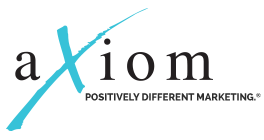
08 Sep Product Management: Installment 2 of 5
Last week, we brought you our insights on product management in the modern business landscape. Today, we’ll examine the first three qualities of a successful product manager: a total business perspective; a goal, team, and process-oriented approach; and a customer and quality focused attitude.
Insight to Success #1: Total Business Perspective
A product manager’s focus is constantly on a continuum. He or she must manage all aspects of the business for immediate, short-term, and long-term profitable growth. If the focus is only on one of those points, it severely hinders that individual’s ability to foster a successful product. In order to keep your eyes on the prizes (yes, plural) as a product manager, you must balance goals and objectives with market and business needs, acquiring obtainable resources along the way. How do you do that? It starts with focusing the team, as well as upper management, on the strategic arena, goals, tactics, and objectives that you’ve set out in your plan. Not sure how to start? The Product Innovation Charter is a powerful and relatively straightforward tool for getting your goals off the ground (you can find a variety of examples online).
But, Rob, what are the best practices for achieving a total business perspective? Never fear, friends. Here’s our list:
Best Practices, Tools & Processes
- Create Business, Market, Product, Platform/Portfolio Planning Guides
- Think about your business’ global objectives, not just local ones
- Develop, use and communicate a Product Innovation Charter (PIC)
- Figure out a resource planning process for the short and long term
- Set schedules for periodic benchmarking to monitor your goals
- Conduct periodic New Product Development (NPD) Process Reviews
- Implement gap analyses, scenario analyses, and competitive research and analytics
Insight to Success #2: Maintain a Goal, Team, and Process-Oriented Approach
It seems almost counter-intuitive with the global thinking insight above, but when it comes to establishing goals, a product manager has to be realistic. This doesn’t mean abandoning any hope of competing on a worldwide basis—it just means setting reasonable expectations that, again, work along a continuum.
Think of it like a roadmap. If you want to drive from the state of Washington to Washington, D.C. (which we don’t recommend, by the way), you won’t just drive without resting—instead, you’ll schedule some stops along the way (and, hey, Minnesota is kind of en route, so feel free to stop by). Take the same advice when it comes to product management. Set realistic goals that align with overall business objectives, and secure the necessary resources to accomplish those goals.
Hey now, Rob, that’s kind of a broad piece of advice—can you give me some specifics? Why, of course!
Best Practices, Tools & Processes
- Translate goals and objectives into essential and tangible metrics
- Align the pertinent metrics to meaningful corporate numbers and benchmarks
- Train your team in leadership and cohesion skills
- Establish a clear process among your team with agreed upon responsibilities
- Manage both internal and external teams with effective development processes
Insight to Success #3: Develop a Customer and Quality Focused Attitude
Your demographic never changes, right? Unfortunately, that’s a misconception that many product managers (and C-suite executives) have. It is crucial to understand that consumer demographics are continually shifting, and a product manager has to be accountable for emerging needs and wants. This is what we like to call, “Voice of the Customer,” and it’s something we’ve done effectively for handfuls of the world’s biggest companies. Using the customer needs gleaned from these tactics, a product manager can translate them into salable, profitable products. Unlike the project manager (again, think of the olive), the product manager must balance new product development with business, market, customer and portfolio needs.
Rob, this blog is great. Can we get one last set of best practices? Ugh, if you insist! But thanks for the compliment!
Best Practices, Tools & Processes
- Commit all team members to participation in Voice of Customer (VOC) at the front-end
- Share VOC research with all business functions
- Use Quality Function Deployment (QFD) and Six Sigma
- Utilize panels, co-development, and brainstorming with colleagues and team
- Where beneficial, automate processes
- Communicate project status globally
Thanks for reading! Check back next week as part 3 launches, featuring detailed advice and best practices on goals 4-6. And if you’re interested in learning more or need training in product management, contact rbeachy@axiomcom.com.





Kyle
Posted at 23:40h, 19 DecemberNice to be here…[…]Identifying and environment your goals can play a very vital role in movttaiing you to understand your imaginative and prescient for the long run. Goal surroundings helps you to make a selection the place you want to pass in existence and what you…